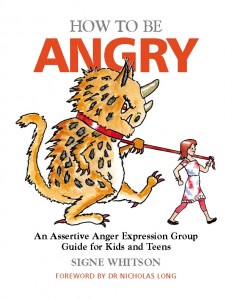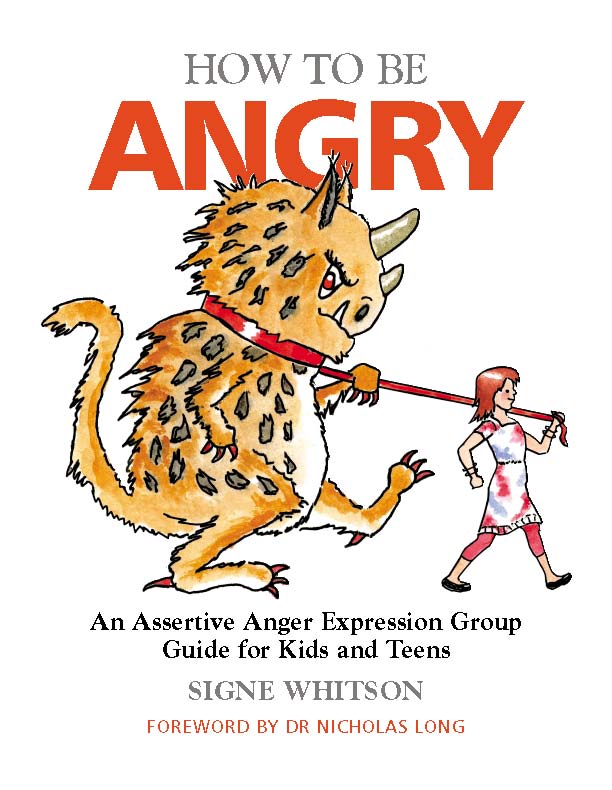Posts tagged assertiveness
How to Respond to a Young Person’s Anger
0One of the most frequently asked questions I receive from teachers and parents is, How should I respond when a  young person is upset or emotionally overwhelmed?” Since self-regulation is the core of emotional well-being (not to mention a pre-requisite for academic progress), I am not just willing…but completely eager…to share practical strategies for helping kids manage intense feelings and develop self-regulation skills.
young person is upset or emotionally overwhelmed?” Since self-regulation is the core of emotional well-being (not to mention a pre-requisite for academic progress), I am not just willing…but completely eager…to share practical strategies for helping kids manage intense feelings and develop self-regulation skills.
Check out my recent post from Psychology Today to find seven practical strategies for responding well to angry kiddos…and please share it with professionals, parents, and others in your network who may also find it helpful.
How to Be Angry Used in Homeschooling Program
0There’s nothing that an idealistic, trying-to-change-the-world-one-child-at-a-time, do-gooder like me values more than hearing that their work is truly making a difference for others. Yesterday, Vanessa Reinelt, a homeschooling mom of two and teacher of 4 other children, sent me this music-to-my-ears feedback:
We have been working through your “How to Be Angry” curriculum and already are seeing huge benefits. Our children (ages 10-13) are already identifying their anger and striving to express their anger assertively! I have looked at many programs and resources trying to find an appropriate one to teach the kids about emotional and social health. None can compare to the depth and quality that yours provides. I  absolutely love the format you use. Teaching the 4 types of Anger Expression and with the healthiest (Assertiveness) as the last module. I genuinely believe if we teach children about expressing…emotions in healthy ways, the human race will stand a chance in reaching the next millennium.
absolutely love the format you use. Teaching the 4 types of Anger Expression and with the healthiest (Assertiveness) as the last module. I genuinely believe if we teach children about expressing…emotions in healthy ways, the human race will stand a chance in reaching the next millennium.
Thanks again for your time Ms. Whitson. You are truly a credit to your profession. Thank you for your amazing book. Your work is making the world a better place.
Thank YOU, Vanessa, for prioritizing the social and emotional health of kids!
If you’ve used How to Be Angry, Friendship & Other Weapons, The Angry Smile, or 8 Keys to End Bullying with students, please let me know how the experience has been for you!
Conflict Metaphor for Kids
43Through the wonders of Facebook, a friend of a friend of a 4th grader shared this pearl of wisdom about conflict resolution. Only wish I had the pleasure of knowing this elementary school student personally!
In conflict with another person, if you come in fierce like a tiger, you’ll have to win. So only you will be happy.
If you come in like a bunny, scared, the other person will win, so only that person will be happy.
If you come in like a bird, with your wings and your heart open, both people in the conflict will win, and both will be free.
Will be sure to use this during How to Be Angry workshops with kids!
Referee Much? Why Sibling Rivalry Is Good for Kids
459Some days, arguing comes as naturally to my kids as breathing! I take heart, knowing that there are lessons to be learned. Please read on and share this link if you, too, spend a lot of your parenthood hoping that all of this bickering will actually benefit your little ones down the line…
http://www.huffingtonpost.com/signe-whitson/sibling-rivalry_b_1353771.html
3 Ways to Help Your Child Cope with Angry Feelings
1079Have you ever been in a situation where you were so overwhelmed with feelings of anger that you were at a loss for words? You had the presence of mind to know all of the things that you shouldn’t say, but weren’t quite sure how to express your true feelings without damaging your relationship. Adults often struggle with effectively communicating angry feelings. For children, this challenge is doubly difficult; kids don’t want to get in trouble for expressing themselves aggressively, but they often lack the skills for communicating assertively.
For three specific skills parents can teach kids to cope with angry feelings effectively, please check me out on Yahoo! Shine:
http://shine.yahoo.com/
Or check out How to Be Angry: An Assertive Anger Expression Group Guide for Kids & Teens for even more kid-friendly strategies.
Fine! Whatever! 8 Passive Aggressive Phrases Everyone Should Know
809Do you ever feel like you are riding on an emotional roller coaster with your child? Is your little one friendly and sweet one day, then sulky and withdrawn the next? Does your teenager consistently procrastinate, postpone, stall and shut down any emotionally-charged conversation? Do you, as a parent, ever resemble that same portrait? If you answered “yes” to any of these questions, chances are good that passive aggressive behavior has found a way into your home and family.
Check out my article in the Huffington Post Parents section to learn about eight of the most common passive aggressive phrases and to figure out if “sugarcoated hostility” exists in your home and family.
http://www.huffingtonpost.com/signe-whitson/passive-aggressive-phrases_b_1116025.html

